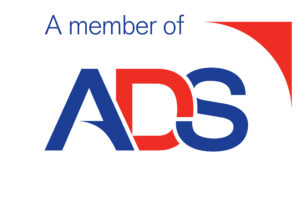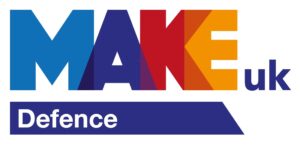Negotiation is the process of coming to terms, and in doing so obtaining the best possible deal for the company. Negotiations involve a conflict of interest. Sellers prefer a high price and buyers want a low price. No one likes to lose, so there is a conflict which has to be managed.
COMMERCIAL NEGOTIATIONS
Commercial negotiations are mainly about the cost and terms of supplying the products or services.
In the purest form, they are no more than haggling between the buyer and seller. At a more complex level, they concern a package in which there is a number of extra products, services, or a combination of both. A seller can usually offer a range of prices or pricing structures to best suit the needs of the buyer, for example, an ex-works price, an installed price, a price that includes service. Various methods of stage payments may also be offered.
Negotiations of this type usually start with the buyer producing the specification. The seller then presents a proposal and the negotiation starts.
The seller will have calculated a negotiating margin and will be prepared to vary the price within that commercial boundary.
Commercial negotiations are usually conducted in a friendly manner, and that is the main problem. One can easily be seduced into a less than satisfactory deal by the blandishments of the negotiator.
THE MIDDLE EASTERN DIFFERENCE
Arabs are born to trade; which is what makes them so formidable at the negotiating table. Having to trade to get most of their products throughout the centuries has made them shrewd negotiators in modern business.
Perhaps it is this image, as well as the political situation, that has created the perception in some people’s minds that Arabs cannot be trusted, that they will beat you down for the best deal.
However, in reality, in the Middle East negotiation is an enjoyable experience. Driving a bargain can be fun. Arabs are courteous and go to great lengths to be hospitable. It can appear that you are an honoured guest instead of an opposing negotiator. Negotiation is a welcome diversion in the Middle East and this is an essential understanding for those seeking to negotiate with those from the region.
START SLOWLY
As is characteristic of the culture there is no rush to get started, and there will be a period of small talk before negotiations commence. Throughout there will be digressions, interruptions, and breaks. The greeting process is traditional, and introductions are carefully made to assure that no offence is given. If the opposing parties know each other already small gifts might be exchanged.
Considerable cross-conversation will take place, and it can be difficult to separate business from the social conversation.
BUILD RELATIONSHIPS
Arabs are eager to place trust, which is why relationship building is an essential component of business in the Middle East. In Middle Eastern culture, trust is a commodity that must be earned through repeated social interactions. If confidence has been gained, then they will be comfortable to negotiate. However, do not relax; be aware that they are professionals at negotiating. And be sensitive to their culture and religion so as not to offend and cause the negotiation to abort inadvertently.
AVOID ASSUMPTIONS
Islamic law governs every aspect of Arabic life, including business, and in some cases could be the reason behind what may seem as unreasonable requests. Knowing this will help in being flexible should negotiation stall.
The handshake is nearly better than a written contract in sealing a deal. Whilst prior knowledge of the legal process is highly important, do not overtly bring a lawyer to a negotiation this can offend.
It is a mistake to assume that an agreement is closed merely because of positive responses. An Arab rarely says “yes”, more often than not they will say “Inshallah” and will actually mean “possibly”.
Do not misinterpret flattery or appeals and persuasions as positive signals of closure.
Be vigilant and protect your interests, enjoy their friendliness and hospitality. Always accept the offer of coffee or an invite to dine with them. This indicates their wish to build a relationship.
THE PROCESS OF NEGOTIATION
Despite the cultural prefix, conduct, and suffix of any meeting in the Middle East, the process is much the same:
Stage 1 – Preparation, setting objectives or drawing up specifications, assembling data, and deciding on negotiating strategy.
Stage 2 – Opening, at this point negotiators reveal their initial positions.
Stage 3 – Bargaining, At this stage, both parties have the same aims. A negotiator will be trying to probe the weakness of the other side’s case and work to persuade them to abandon their position and move closer to their own. Throughout the encounter constant checking of the position in light of information from the other side is essential, and the gauging of opponent reactions to the case or proposal.
The original assessment may be confirmed during the meeting, or an agile negotiator will read the signs and adjust the position to be more palatable to the other side, without losing sight of their own objectives.
During this phase, a negotiator may decide to apply pressure or give concessions in order to move forward to a satisfactory conclusion.
Stage 4 – Closing, Each party will judge whether or not the other side is determined to stick to its position or settle for a compromise. At this stage, final trade-offs may lead to a settlement.
NEGOTIATING TACTICS
PREPARATIONS
In preparation define the bargaining objectives:
- Ideal – the best possible deal;
- Minimum – the least that can be accepted;
- Target – the realistic goal to be achieved.
Any proposal should be structured so that concessions can be exchanged. For example, a customer might accept a higher price for a concession in payment terms.
It is essential to understand as fully as possible the other party’s requirements or what they are prepared to offer.
Decide on strategy and tactics, the opening offer, the steps to be taken, and the concessions that could be offered, as well as any arguments and supporting data for justifications.
Assemble all of the data and documentation required to support the case.
Select a negotiating team, never fewer than two members, ideally three or more; one to lead, one to take notes and feed the negotiator for information, and the other(s) to observe opposite numbers and play a specific part in accordance with their brief.
Brief the negotiating team on their roles, the strategy, and the tactics to be adopted. All prepared documents should be shared amongst the group.
If possible, rehearse the team in their roles.
OPENING
The opening tactics should be to:
- Open realistically and moderately;
- Challenge the opponent’s position as it stands, but allow the opponent some room to manoeuvre;
- Explore attitudes, ask questions, observe behaviour, and most importantly – listen; assess the opponent’s strengths and weaknesses, their tactics, and the extent to which they may be bluffing or just do not know;
- Do not make concessions of any kind at this stage;
- Be non-committal about proposals and explanations.
BARGAINING
The aim is to narrow the gap between the two positions and to persuade the other side that the presented case is strong, ideally:
- Make conditional proposals;
- Never make one-sided concessions, always a trade-off;
- Negotiate on the whole package, do not allow the opponent to pick off one item at a time; keep all issues open so as to extract maximum benefit from potential trade-offs.
READING THE SIGNALS
During the bargaining, it is essential to be sensitive to any signals made by the other party. In the Middle East, this can be transmitted in the body language. In the Arab context, body language is essential. Be alert to signs of positive and negative reactions through body language; this may well be a better indicator of opinion than what is suggested in speech.
If the opponent makes a conditional statement, it illustrates that they are prepared to move. Explore possibilities with questions. Attempt to get behind what is being said, and understand what they really mean, for example:
ARGUING
At all times, be culturally sensitive to the potential for loss of face. Much of the time will be spent in arguing. Clear thinking is a process of reasoning which will help present a proposal, and in negotiation will help sift information and establish or prove a relationship with the opponent. The critical attribute of the negotiator is the ability to argue persuasively and to detect flaws in what an opponent counters.
Always consider the manner in which you argue. Do not beat the opponent down; it is in the mutual interest and benefit of future good relationships and business.
Do not browbeat, disagree but do not belittle the opponent. Discredit the argument, not the person.
To argue effectively, be prepared to listen to the stated and the implied. Wherever possible challenge the opponent to justify a proposal on an item by item basis. Put the onus on questioning for clarification.
To create time to consider, answer a question received with a question.
Do not say “no” offer an alternative package. Remember that increased specification required by the opponent and improved delivery time can always be met, at a cost…
GAMBITS
It is essential to understand the culture in the Middle East when negotiating because Arabs are more likely to approach the negotiation as competition and an opportunity to establish and protect honour. As opposed to the more western approach of a puzzle needing to be solved.
Arabs are much more competitive than westerners in negotiations. Compromise and concession go together when negotiating in the west. Another notion is give and take and reciprocity. These concepts are elements of negotiation; their lack would make a successful outcome unlikely.
These assumptions are less likely in the Middle East mode of negotiation. Arabs recognise that a settlement is achievable when both sides are willing to make sacrifices and that agreements come about only when neither side can claim total victory over the other.
A climb down from a deeply cherished value will cause a severe loss of face. Tanazul is the act to concede in favour of an opponent and has strong connotations of surrender and defeat.
The gambits that can be employed in any negotiation are endless. However, they should be applied with tact and care in the context of negotiating in the Middle East in order to achieve an objective. A gambit used that creates offence and loss of face will directly affect the survival of the proposal, prosperity of the business, and even the destruction of relationships.
CLOSING
When and how to close will depend on an assessment of the strength of the opponent’s determination to see it through to a deal. It may be that closure will be achieved by:
- Making a minor concession and trading off against an agreement to settle. This is the best possible time to offer a concession rather than at the bargaining stage;
- Do a deal and split the difference, or bring in a new element to the offer as an incentive;
- Summarize the events to date, emphasizing the concessions made, and the movement from the original position.
- Applying pressure through a threat of consequences is a high-risk gambit, and potentially very harmful in the context of saving face;
- Where ever possible give the opponent different courses of action.
Do not make a final offer unless you are prepared to follow through and deliver on it.
If it is not really a final offer and the opponent calls your bluff, then further concessions will need to be made with the subsequent undermining of credibility in the offer. Do not allow to be hurried in making a decision, avoid committing and devaluing the word “final”, be as positive as possible in stating that this is as far as you are prepared to go.
IN CONCLUSION
Negotiations in the Arab world can be tough. They may simply be centred on the price, but usually, they involve a package. Extra benefits can be offered and traded for concessions. However, the convention is that whatever happens in the negotiation both parties hope to settle on an agreement. Off the record, discussions are the norm but should not be formally referred to in the bargaining stage, unless the opponent agrees to it. Concessions once made cannot easily be withdrawn. Be clear on what is a firm offer and what is conditional; a firm offer cannot be withdrawn. A final agreement is precisely what it means.
POTENTIAL
The Arab world is now aggressively pursuing foreign investment through the creation of free trade zones that offer financial incentives for companies wanting to locate there. There is a lot of business to be done and many ways to succeed.
If you decide to investigate these opportunities, do not leave home without contacting a Middle East specialist such as Proelium Law LLP who can provide guidance in Arab culture and business practices. Government agencies also can help, or a counterpart in the Arab world. An on-site sponsor may be needed to conduct business or to enter some countries.
Good luck!
Barry ET Harris MBE is a consultant for Proelium Law LLP. He is also a British Army veteran who combines operational experience with extensive commercial consulting, executive, and management expertise gained in complex environments and high-risk jurisdictions worldwide.
For a confidential, no obligation discussion about Arab culture and business practice, please contact Adrian Powell: [email protected] or on 02038757422.
Need advice?
If you’d like further information, or to discuss working with us, please get in touch







